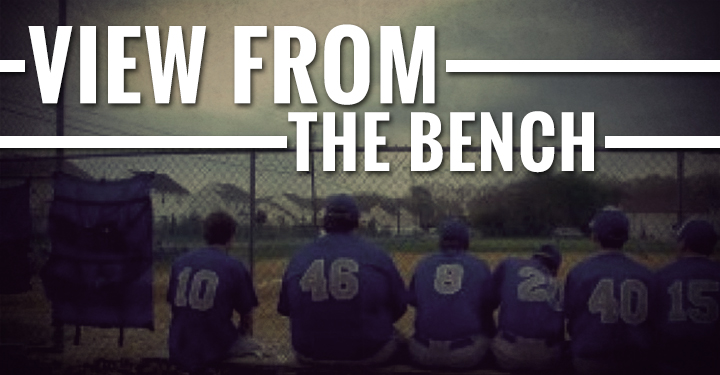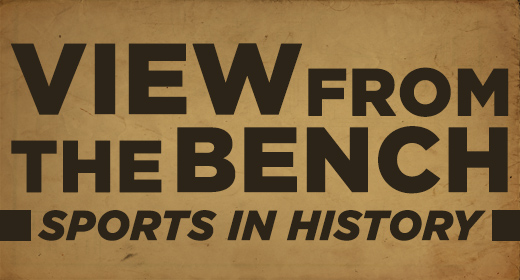ASU’s basketball victory over the U of A on February 14th at Wells Fargo Arena is considered a signature victory. Many believe that it was the one additional resume builder needed for ASU to get off the bubble and into the tournament later this month.
The victory could well have been tarnished had anyone been injured during the events that occurred as the rivalry game came to an end. It has been well-documented that the ASU faithful stormed the court that evening, a celebration that is generally accepted and befitting a victory of this significance. The student section poured on the court before the end of the overtime, wrongfully believing that the game had ended with Jahii Carson’s rim hanger (which should have resulted in a technical being called, but that discussion is for another day). The fans, mostly students, had to be cleared off the court before the Wildcats could attempt one more desperation shot to tie the game. When that shot failed, back came the students. Since they were entering the court from the exact area that the U of A players had to exit, the entire U of A team and coaching staff were confined to their bench area. No incidents followed. I credit the Wildcat coaching staff and players for the poise they showed in the face of the bedlam as well as the ASU security who formed a human shield around the Wildcat bench.
The same circumstances but with a different result arose following last week’s overtime game between New Mexico State and host Utah Valley in which Utah State prevailed, 66-61. As the buzzer sounded, New Mexico State guard K.C. Ross-Miller purportedly threw the basketball at a guard Holton Hunsaker of the victorious Utah Valley Wolverines. The two players then got into heated words as hoards of Utah Valley fans stormed the court in victory. In apparent support of their team, the fans joined in the melee between these two and other players, purportedly attacking Daniel Mullings of the Aggies. This caused a New Mexico State teammate to swing at one of the fans in apparent defense of Mullings. Fortunately, coaches and staff were able to extricate the New Mexico State players and no serious injuries were reported.
The events following the Wolverine victory over the Aggies are certain to renew the debate about storming the court. The potential for injury to fans is no less than what could occur if a riot broke out in a movie theater or club with people racing to the one open exit. Fans are likely to be trampled or injured in other ways. Further, during the storming, fans pay little regard to the members of the visiting team. Since the storming of the court follows a road loss, the level of patience or restraint by defeated visiting team members is likely not at its optimum. Testosterone levels are most certainly elevated, both for players and celebrating fans, increasing the potential for aggression. Add alcohol consumption by some of the fans to the equation and it becomes a powder keg waiting to blow.
The debate about the propriety of storming the court has now been renewed. So how should this debate be resolved? To answer that, we need to study history, both about fans and celebrations.
The term “fan” has two differing origins. The old-English version is claimed to be from the word “fancy,” as in a situation where a person has an interest in a hobby or event. The Americanized version of “fan” is often claimed to have its origins from the word “fanatic,” defined as “a person with anextreme and uncritical enthusiasm or zeal.” Regardless of whether one fancies a team or is a fanatic, “storming of the court” following a major home team victory has been an acceptable or sanctioned behavior.
Historically, this phenomenon has not been limited to college athletics. In fact, the most notorious “storming” occurred in 1969 at Shea Stadium in New York. The Miracle Mets had won the World Series in game 5, victorious over the heavily-favored Baltimore Orioles. The fans attacked the field following the third out in the top of the ninth, and it looked a lot like a zombie attack scene from Brad Pitt’s recent film, World War Z. By the time it hit critical mass, players on the Mets had knocked over their own celebrating fans just to reach their dugout and clubhouse safely, and the large scale view of the field looked very similar to Woodstock, another New York event that had happened earlier that summer.
Decades later, particularly for World Series clinching games in New York, horse-ridden riot police have encircled the field to prevent crowds from jumping fences to celebrate on the field. As a result, it is no longer the culture in baseball for fans to believe it is acceptable to storm the field.
The celebration following Game 7 of the 2001 World Series best exemplifies the changed culture in baseball. Those of us in attendance at Bank One Ballpark (now Chase Field) for that amazing 9th inning remained by our seats for the hour that followed Gonzo’s bloop single over the head of Derek Jeter. We joined arm in arm while singing Queen’s “We Are The Champions.” More importantly, the post-game trophy and MVP ceremony was done on the field in the presence of us all. Had the field been stormed, that ceremony would have been relegated to the clubhouse, witnessed only by television viewers and not those within the stadium.
College sports have not adopted change in culture away from storming the court. To be clear, I am not suggesting that horse ridden police encircle a basketball court at the end of a major victory. But that does not mean that a change in the culture is not mandated. While in college, there are opportunities galore to be a knuckle-head. Just spend some time in a fraternity to determine how many. But that should no longer serve as an excuse to permit continued storming of the court. It is dangerous to players and fans, and nothing good comes from it other than a sound-bite moment for the network covering the game and for SportsCenter to add to their game highlights.
Storming the court should be no more appropriate than players going into the stands, such as the situation involving Oklahoma State’s Marcus Smart. In early February, Smart went into the stands to confront inappropriate comments from a Texas Tech fan, and was suspended for three games. The NCAA acted immediately thereafter, adopting Rule 10-1.3.h. It has not become known as the “Smart Rule,” but it very well could be so named. If a player leaves the court to become involved in a verbal or physical altercation with a fan, that player will be hit with a flagrant 2 foul and automatically ejected. The rule does not allow for exceptions or explanations as to why the player left the court.
The NCAA realized the danger posed to player and fan when the two collide in a confrontation in the stands. Why isn’t there a similar clear rule when the fans enter the court? There is no good answer. It is therefore time for the NCAA to act as decisively in bringing to an end the storming of the court.

